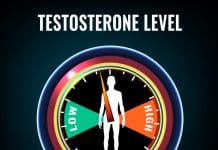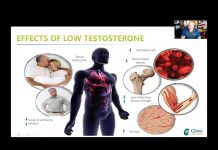The hypothalamus-pituitary-gonadal (HPG) axis
Sex hormone synthesis is controlled by the pulsatile release of hypothalamic gonadotropin-releasing hormone (GnRH)
At the pituitary gland, GnRH stimulates the release of luteinizing hormone (LH) and follicle-stimulating hormone (FSH) into the general circulation
LH then binds to its target cells (Leydig cells in males and theca cells in females) and increases the expression of steroidogenic acute regulatory protein (StAR)
StAR promotes the transfer of cholesterol to the inner mitochondrial membrane and initiates steroidogenesis.
This is the rate-limiting step of steroidogenesis in all tissues.
At the inner mitochondrial membrane, cholesterol is converted to pregnenolone by the action of P450scc.
Androgen synthesis in males
Androgens are steroid hormones that control the expression and maintenance of male sexual characteristics
Adrenal androgens DHEA and androstenedione are produced in the zona reticulata and zona fasciculata of the adrenal cortex.
Testosterone is produced Leydig cells, which are found adjacent to the seminiferous tubules of the testes
In Leydig cells, LH initiates the production of pregnenolone
Pregnenolone is then converted to DHEA in a two-step process mediated by 17,20-lyase (17α-hydroxylase)
Because Leydig cells express high levels of 3β-HSD and 17β-HSD, DHEA is rapidly converted to testosterone via the intermediates androstenediol and androstenedione
Testosterone is converted to dihydrotestosterone (DHT) by the action of 5α-reductase in target tissues; although it is about one-tenth as abundant as testosterone, it accounts for most of testosterone’s biological action
https://www.pathophys.org/sexhormones/
SaveSave

















